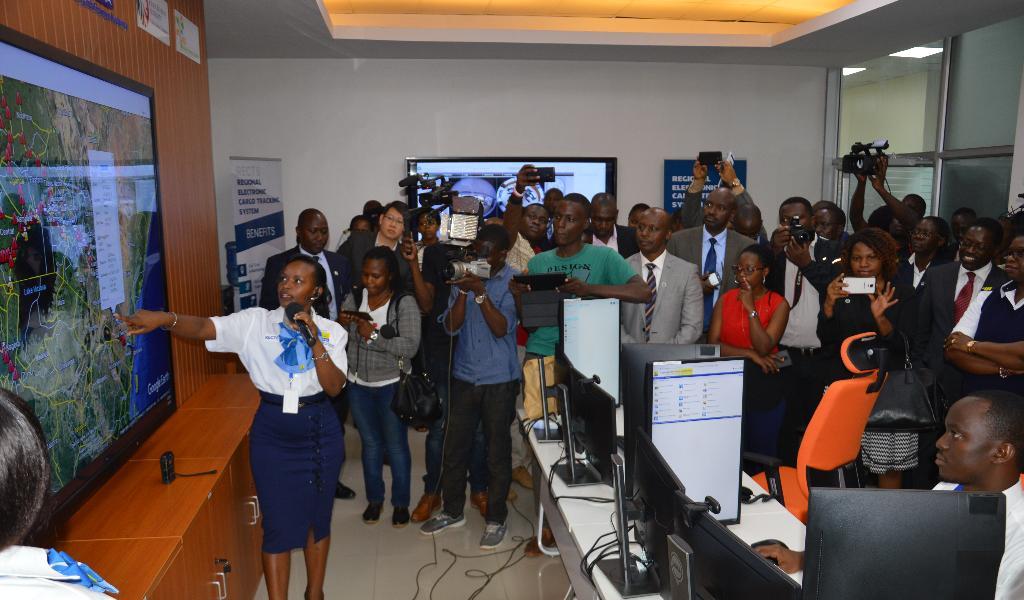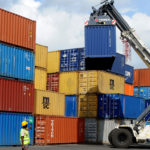By Herbert Ssempogo
| About five customs entries, customs agents’ fees in two countries, two goods- in-transit guarantee bonds and duplicated customs procedures in Kenya and in Uganda. That was the inconvenience that characterised cargo clearance before the implementation of the Single Customs Territory (SCT) in 2013. Steel and Tube Industries’ Aggrey Ijara recollected that back in 2013 he was required to declare each container on five to seven customs entries for Mombasa Port, and two entries for transit and on arrival at Malaba, Eastern Uganda respectively “The many entries were costly and a lot of time was consumed,” Ijara stated. Importers paid US$200m fees for clearing agents in Mombasa, a Sh150, 000 (over US$40) bond fee at Malaba and another Sh500, 000 (US$138) for agents in Kampala. This was in addition to two goods –in- transit bonds to deter dumping of cargo in Kenya or Uganda. The delays and costs were an indictment on revenue authorities, which were failing on the trade facilitation role. To address these challenges and others that impeded regional trade, the Presidents of the East African Community (EAC) agreed to fast track the implementation of SCT to enable importers declare their goods once on arrival at the first port of entries into the region. It is a stage towards full attainment of the Customs Union achievable by the removal of restrictive regulations and/or minimization of internal border controls on goods moving between the partner states. In June 2013, amid a Northern Corridor Presidents’ Summit, Uganda, Rwanda and Kenya heads of state agreed to fast track SCT’s implementation. During the summit, said Commissioner Customs, Dicksons Katweshumbwa, the Presidents agreed on a destination model of implementing the SCT. Under the model, Customs clearance is done while goods are still at the first point of entry into the region. The Customs declaration is done only once in destination country. Other features of SCT are, taxes are paid to respective country of destination while goods are still at the first point of entry, and goods are moved under a single regional guarantee bond-the Regional Customs Transit Guarantee Bond and physical verification of goods done once; at first entry point, originating partner state or destination country. Also important is the mutual recognition of customs agents in the EAC region A Customs agent licenced in Uganda is now able to clear goods in the customs business systems of any of partner states. And in what could be music to importers’ ears, goods in transit are electronically monitored by the Regional Electronic Cargo Tracking System (RECTS), with monitoring centers in Kampala, Nairobi and Kigali SCT is supported by interconnected customs systems of all the revenue authorities and port authorities, this has enabled real time exchange of information. Because of system interconnections, importers are now able to clear port charges online. There is no need to travel to Mombasa. Four months after the presidential directive, said Kateshumbwa, Uganda in October 2013 piloted with petroleum imports of the biggest fuel dealers namely VIVO Uganda and Total Uganda. Subsequently, phased implementation commenced in February 2014 with all other fuel imports. “Phased implementation was to minimize trade disruptions and to provide for sufficient change management for all stakeholders,” Kateshumbwa, a Uganda Revenue Authority official, explained. In July 2014, all intra region (EAC) cargo traded within EAC partner states (except for selected cargo to Burundi) started being cleared under SCT. Others thereafter were bulk cargo including clinker, wheat grain, crude edible oil, steel products, bitumen; containerized cargo including rice, sugar, used clothing & used shoes, dry batteries, beverages, alcoholic drinks, cooking oil cigarettes, neutral spirit, steel products, and then motor vehicle units imported through Mombasa. Fuel and bitumen imported through the Dar es Salaam, Tanzania followed thereafter. Currently, approximately 50% of customs revenue is collected from goods cleared on SCT, according to Kateshumbwa. And because of its success, it will be rolled-out on all imports via Mombasa on September 1, 2016, Kateshumbwa disclosed. Dar es Salaam will follow. Following implementation, importers commend authorities for facilitating trade. “SCT has reduced paperwork, time and the cost of doing business. We have saved a lot. It used to take a week for the cargo to get to Kampala,” Ijara stated, adding that now it takes two days to get to Kampala. Mukwano Group of Companies’ BW Rwabogo agreed, saying, “The system is good. We are using less people and documents. I do not see any disadvantages.” Rwabogo concurred with Ijara on the savings and reduced travel time between Kampala and Mombasa. Since inception, said TradeMark East Africa’s, Richard Kamajugo, travel time fell from 18 days in 2012 to 4-5 days. Citing fuel, the TradeMark East Africa Senior Director said before SCT, Uganda suffered shortages especially during festive seasons. “Uganda used to experience fuel shortages around Christmas and prices used to escalate. SCT improved the supply of fuel and Christmas of 2014 was the first time fuel was available in all towns in Uganda within the same price ranges,” he stated. TradeMark has worked with the EAC Secretariat and the Revenue Authorities to sensitise their staff, stakeholders and the public, and also to develop and document the SCT clearance procedures. In Rwanda, one of the EAC partner states, SCT clearance procedures have been rolled out for all goods imported through both Ports of Mombasa and Dar es Salaam. Another member, Burundi has rolled out SCT only for selected items. SCT is expected to enhance efficiency as the EAC partner states continue investing in modern information technology systems. This will have long term positive impacts on the clearance times and the cost of doing business in the region. The Writer is an officer at URA’s Media Desk, Public & Corporate Affairs |







